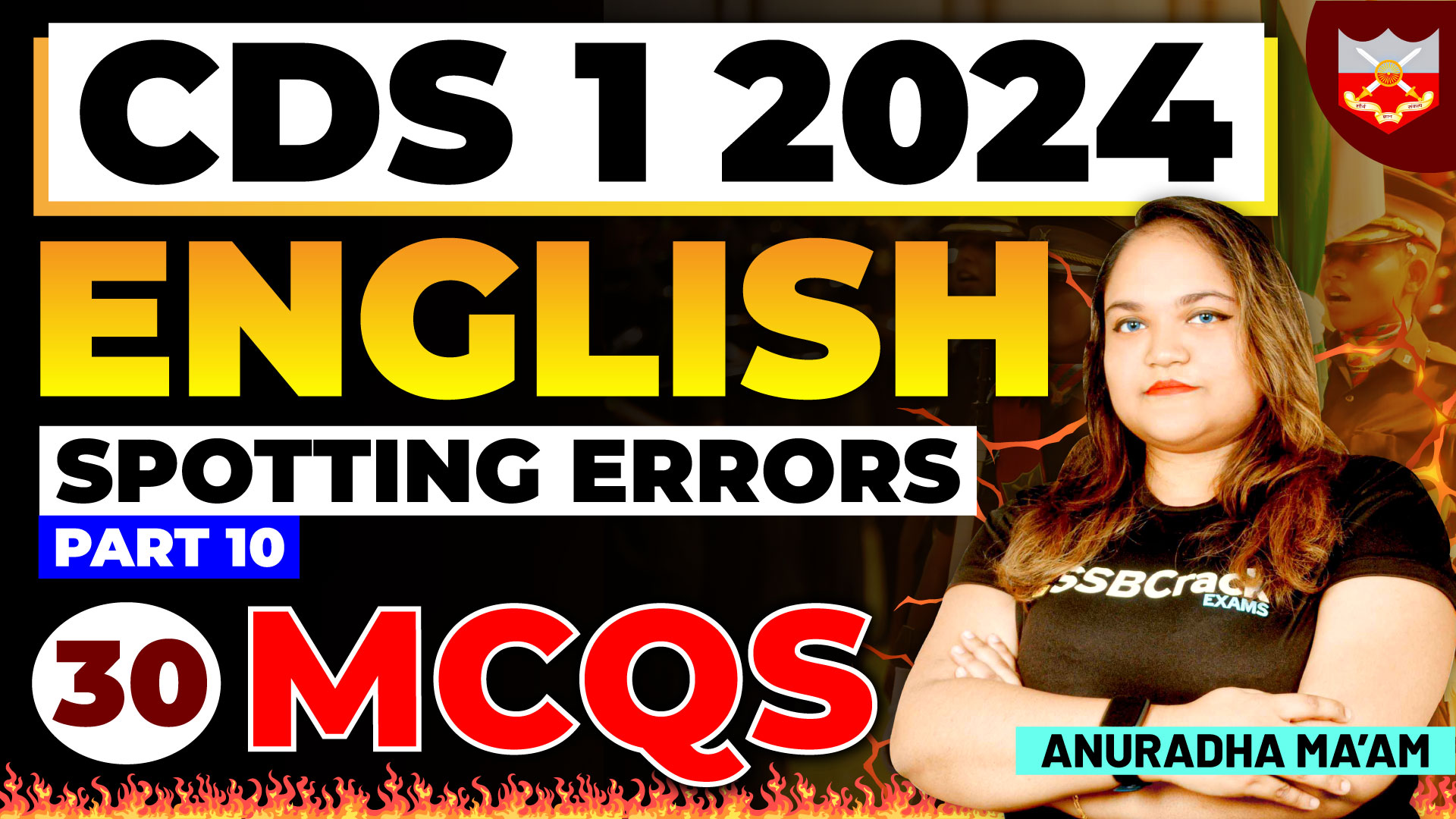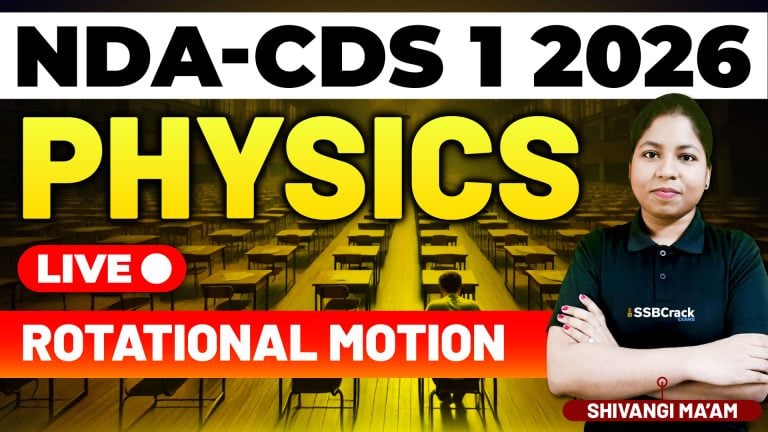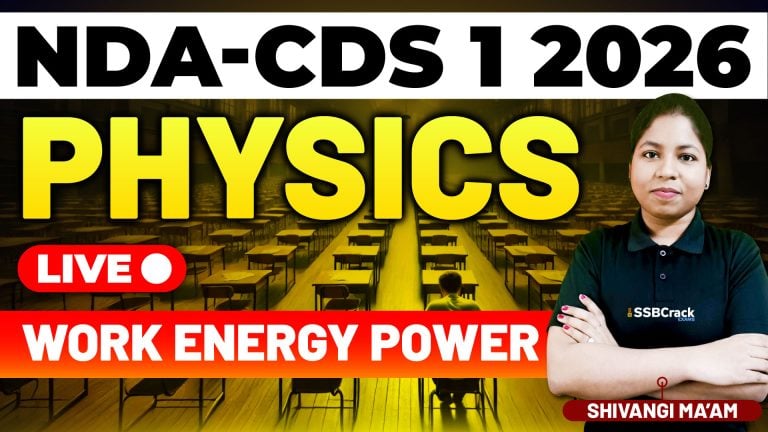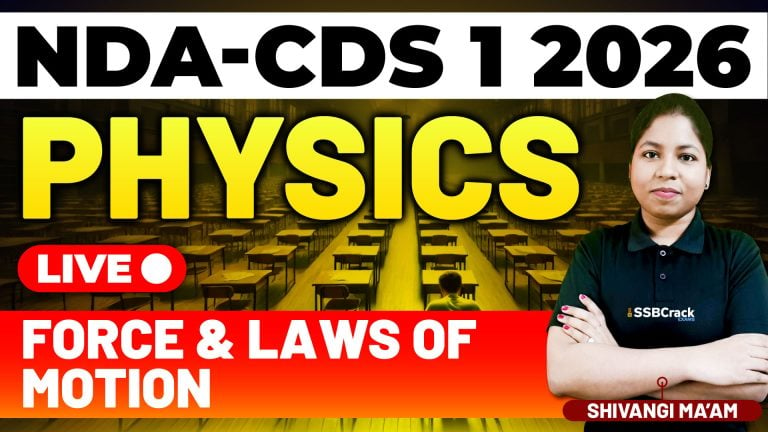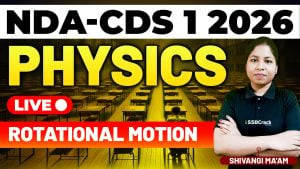The Combined Defence Services (CDS) examination stands as a pivotal milestone for individuals aspiring to serve in the esteemed armed forces. Among the various sections of the CDS exam, the English paper holds significant importance, with the “Spotting Errors” topic being a crucial component. This article aims to provide a comprehensive guide on how to effectively solve questions from the Spotting Errors topic in the CDS English exam, ensuring candidates can navigate this section with confidence and precision.
DIRECTIONS: Each item in this section has a sentence with three parts labelled as (a), (b) and (c). Read each sentence to find out whether there is any error in any underlined part and indicate your response on the Answer Sheet against the corresponding letter i.e., (a) or (b) or (c). If you find no error, your response should be indicated as (d).
Q) The factory complex houses a shop-floor (A) / and 10 cubicles for the staff in an area (B) / of about thousand squares meters. (C) / No error (D)
Ans. (C)
Q) Mr. Gupta with his wife (A) / and younger brother (B) / were present at the station. (C) / No error (D)
Ans. (C)
Q) She was annoyed (A) / when she found that (B) / the chewing gum was stuck to her hair. (C) / No error (D)
Ans. (C)
Q) It is not easy for an actor (A) / to earn respect from both, the fans (B) / as well as critics. (C) / No error (D)
Ans. (C)
Q) Hardly had he come out of the (A) / cinema hall then the bomb exploded (B) / and shattered the hall completely. (C) / No error (D)
Ans. (B)
For more questions, check out Top 30 Spotting Errors MCQs In English | Part 10 | CDS 1 2024 | UPSC
- Understanding the Objective:Spotting Errors questions in the CDS exam assess a candidate’s ability to identify and rectify grammatical inaccuracies within sentences. The objective is not only to recognize errors but also to select the most appropriate correction that maintains the integrity of the sentence structure and meaning.
- Grasp of Grammar Rules:A solid understanding of grammar rules is essential for success in Spotting Errors questions. Candidates must be familiar with concepts such as subject-verb agreement, verb tenses, pronoun usage, parallelism, and sentence structure to effectively identify errors and choose the correct option.
- Read the Entire Sentence:Avoid the common mistake of focusing solely on the underlined part of the sentence. It’s crucial to read the entire sentence to grasp the context and identify errors that may extend beyond the highlighted portion.
- Subject-Verb Agreement:Subject-verb agreement errors are common in Spotting Errors questions. Ensure that the verb agrees with the subject in number and person, especially in sentences with compound subjects or phrases.
- Verb Tenses and Usage:Pay close attention to the tense of verbs and ensure consistency throughout the sentence. Be mindful of contextual clues that may indicate a specific time frame requiring a particular tense.
- Pronoun Accuracy:Pronouns must agree in number and gender with their antecedents. Be cautious of ambiguous references and ensure clarity in pronoun usage to avoid errors.
- Modifiers and Parallelism:Check for misplaced or dangling modifiers and ensure parallelism in lists, correlative conjunctions, and balanced sentence constructions.
- Eliminate Redundancy:Spot and eliminate redundant phrases or words that do not add value to the sentence. CDS questions often test the ability to maintain concise and effective communication.
- Consider Context:Understand the broader context within which a sentence is presented. Consider the intended meaning and purpose of the sentence to identify errors that may impact coherence.
- Practice Regularly:Practice is key to mastering Spotting Errors questions. Engage in regular exercises and practice sets to familiarize yourself with common error patterns and refine your analytical skills.
- Utilize Mock Tests:Simulate exam conditions by taking mock tests. This helps in honing time management skills and adapting to the pressure of identifying errors within a stipulated timeframe.
- Learn from Mistakes:Review and understand the corrections in questions you get wrong. Identify patterns in your mistakes and focus on strengthening those specific areas during your preparation.
Conclusion:
In conclusion, mastering Spotting Errors questions is crucial for success in the CDS English exam. By understanding the objective, grasping grammar rules, reading the entire sentence, and practicing regularly, candidates can enhance their ability to identify and rectify errors effectively. Success in this section not only contributes to a higher language proficiency score but also aligns with the broader goal of preparing candidates for effective communication in the dynamic and challenging environments inherent to a career in the armed forces.
